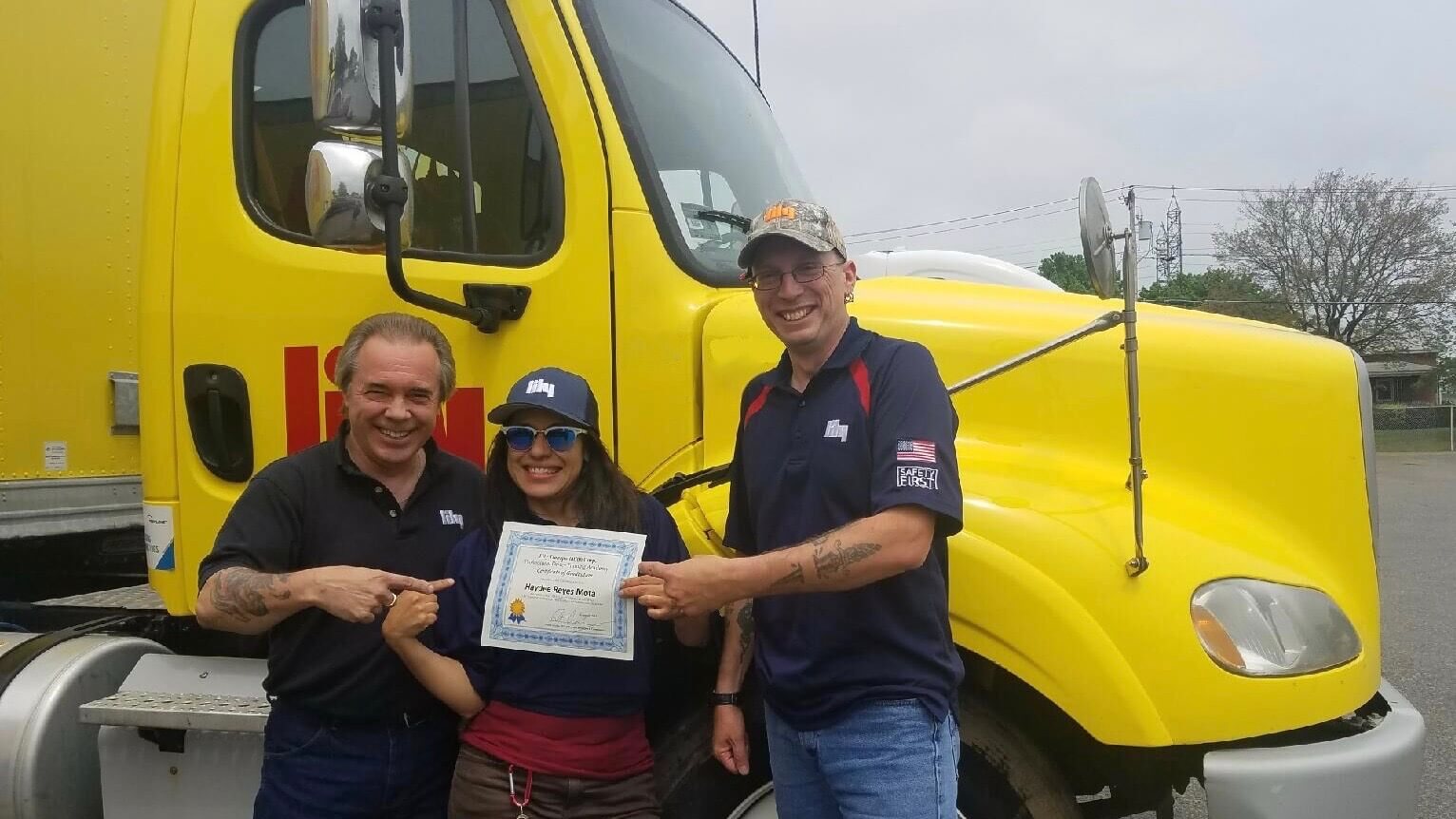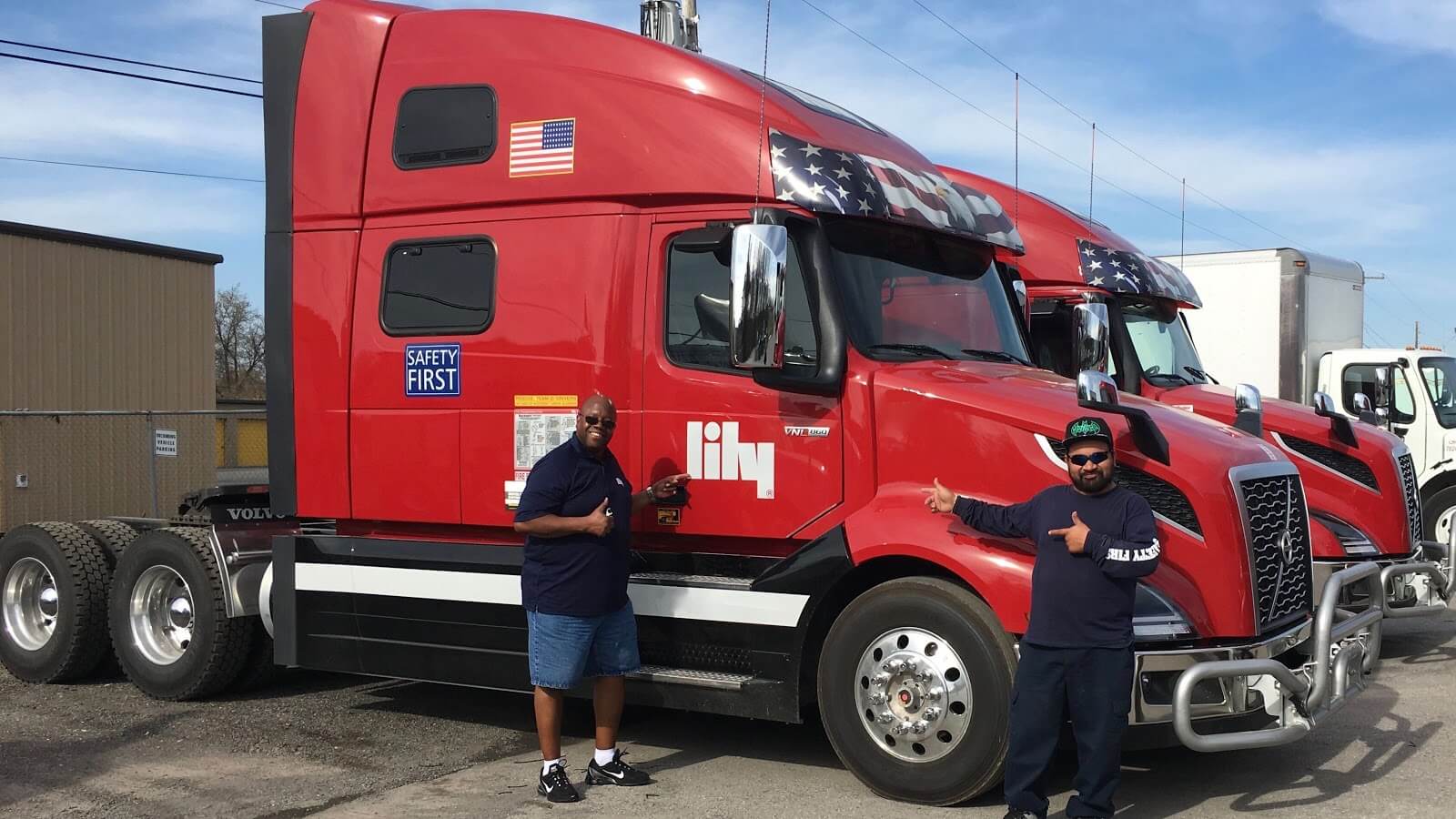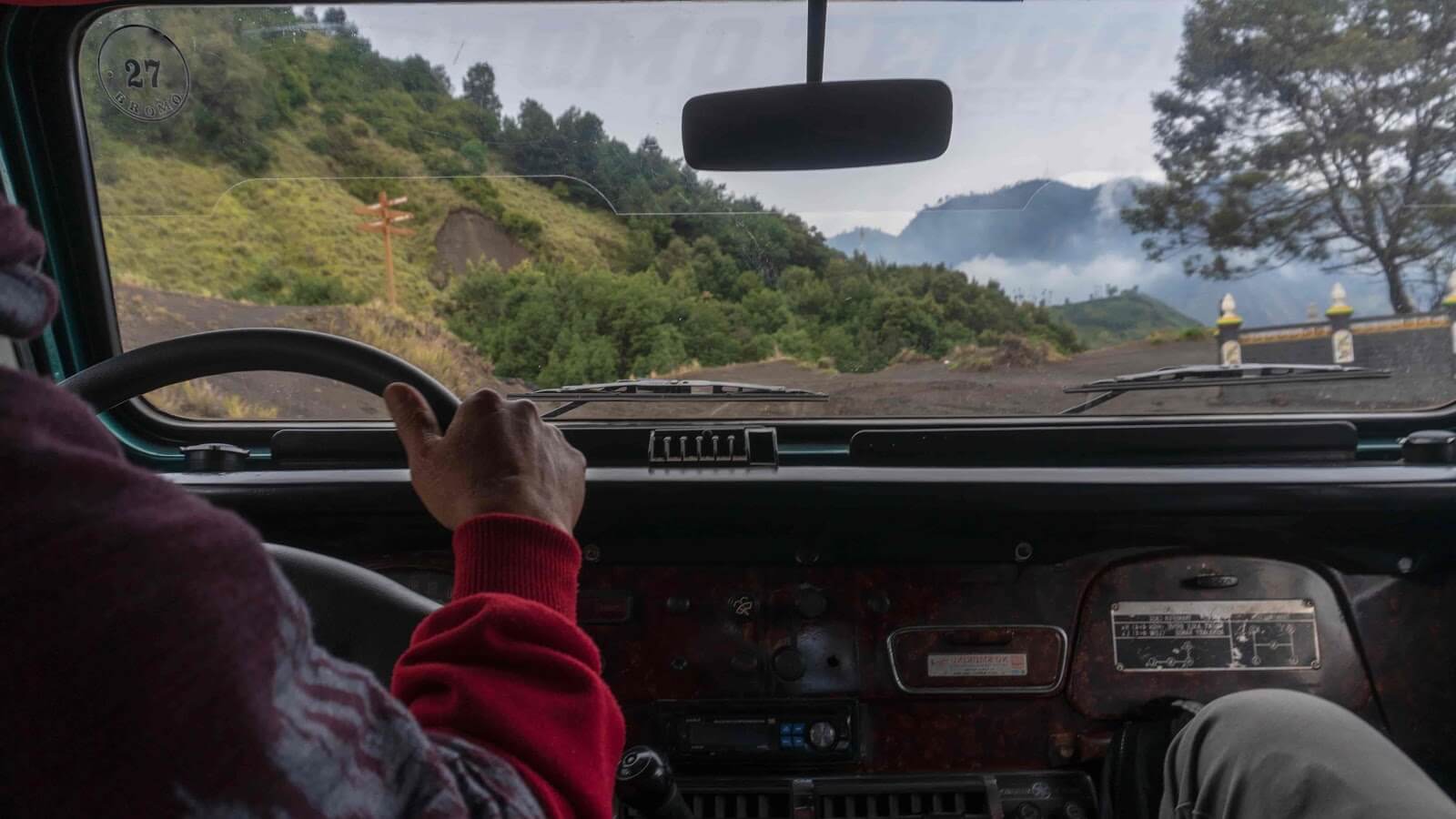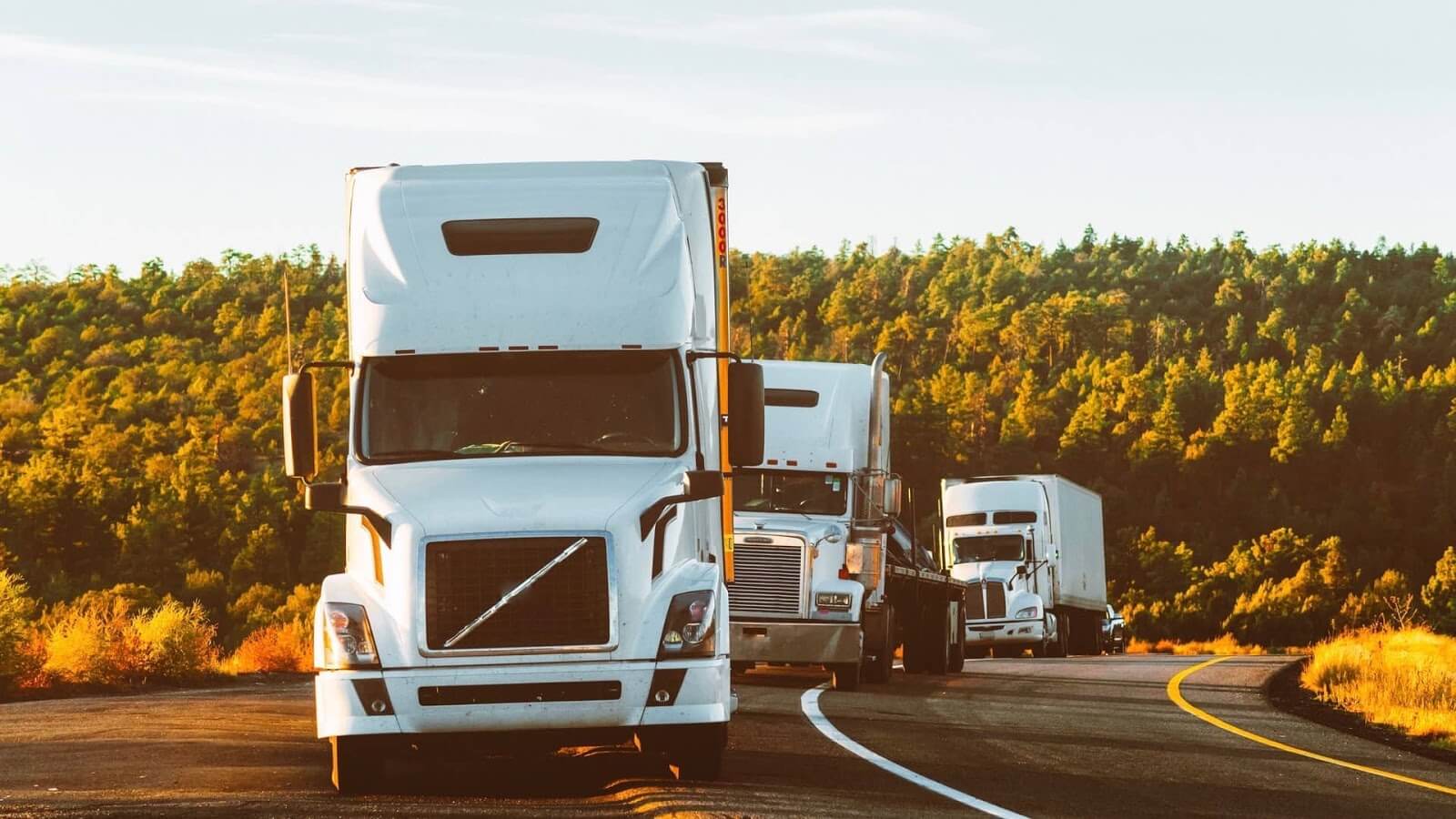The trucking industry is changing. As the current demographics of truck driving professionals approach retirement, the trucking and logistics industries are broadening their gaze toward new, passionate, and more diverse drivers interested in learning more about the types of jobs in the transportation industry available to them.
OTR trucking jobs come packaged with a wealth of benefits. As the modern trucking industry grows and adapts to a changing environment, those benefits are evolving as well. Not only have trucking companies started offering perks like “signing bonuses and increased pay” to try and attract more drivers, but new truck industry trends have also introduced a variety of technological advancements into the industry as well.
The idea of an OTR driver—or two, if they’re working as an OTR driving team—traveling for hours a day in relative isolation is becoming nearly obsolete. Technology in logistics has introduced new and dynamic features into truck cabins that make it easier than ever for long-haul drivers to stay in touch with their dispatcher, their family, and the world around them.
Jobs in the transportation industry are more accessible than ever before. With the truck driver shortage still a motivating factor in the industry, companies across the country are eager and excited to work alongside new drivers and help them get settled into the OTR driving lifestyle.
If you’re one of the people interested in learning more about OTR trucking jobs and the emerging truck industry trends, or if you’re simply bored with your job and are looking for something new, then Lily Transportation is here to help. Keep reading and see firsthand how the modern trucking industry is changing to meet the needs of its drivers.
Table of Contents:
Modern Logistics Industry Trends
- Technology in Logistics
- Updated Truck Cabins
- Truck Driver Health and Wellness
- Increased Emphasis on Diversity
Settling Into the Truck Driver Lifestyle
Modern Logistics Industry Trends
The trucking and logistics industry has been a dominant force in the country since the first gasoline-powered internal combustion engines entered the scene in 1910, suddenly making it possible for trucks to “carry large amounts of freight from one location to the next.”
In the years since there have been countless truck industry trends and developments that have each helped the concept of long-distance trucking evolve and adapt to the needs of its drivers. Here are just a few of the (many) trends that are either currently growing roots in the industry or are expected to do so in the not-so-distant future:
Technology in Logistics
Technology is on an endless cycle of iteration and evolution that means there’s always something new and groundbreaking that promises to change the world for the better. This is true for every industry you can name, including the logistics industry and the OTR trucking jobs it provides.
When it comes to trucking, technology is being used to improve the driver’s comfort, increase safety, maximize efficiency, and even reduce the industry’s overall environmental footprint.
For example, in an article on Trucker.com, Sandeep Kar—the global vice president for a business consulting firm and a renowned expert in heavy truck systems and technologies—says that the “‘future truck is going to be a green truck; it will save fuel and have a smaller environmental footprint.’”
According to Kar, these future trucks will be “connected to the world outside, and the world outside will be connected” to our trucks. Where OTR trucking jobs once meant spending days or weeks separated from your loved ones, technological advancements have made it easier than ever before to stay in touch with your friends and family back home.
Drivers “can now video chat with loved ones in their downtime,” Advanced Career Institute says. “They can receive text messages, emails, and make phone calls from their trucks. This has created a more socially connected trucking world that is healthier for the OTR truck driver as well as those back home missing a truck driver.”
Technology in logistics doesn’t stop there though, as NPR reports that “Many new trucks have automatic transmissions and the type of safety features you might expect on a new car: cameras and computers that watch lanes, look out for obstacles and even hit the brakes automatically sometimes.”
While many are talking about the potential of self-driving, automated trucks, a future without truck drivers is nowhere close to reality. Just as planes still have pilots, so too will the OTR trucking industry still have drivers. As such, new trucking technologies are designed to better the comfort, safety, and productivity of OTR drivers across the world.
Updated Truck Cabins
One of the most obvious places new technology has influenced OTR trucking jobs is in the truck cabins themselves. It’s no secret that the trucking industry needs drivers, and updating the way the truck cab works with the driver to promote comfort and accessibility is one of the most important things the industry can do to attract and retain more drivers.
On Trucking Info, the product marketing manager for a prominent trucking company says that “‘The simple fact is that as trucks continue to offer more desirable features, the profession becomes that much more appealing. And, if a fleet can appeal to drivers with their equipment and use it to differentiate themselves from their competitors, they’re willing to spec more premium driver-friendly features.’”
Some of the “driver-friendly features” that Trucking Info outlines include:
- Automated manual transmissions
- Foldable dinette and work tables
- Full-size Murphy beds
- Additional storage
- Electronics like a TV, refrigerator, microwave, sound system
- More outlets for devices
- Heated/ventilated seats
- Aircraft-inspired LED lighting and dimmer switches
- More accessible layouts of switches and gauges
There are even trucks emerging on the market that come with a mini-gym so drivers can stretch, exercise, and keep themselves active and healthy when they stop driving for the day.

Truck Driver Health and Wellness
Another essential addition to the growing list of new truck industry trends is one that’s been around for many years: truck driver health and wellness.
Ensuring the continued health of its drivers has been one of the industry’s most valuable and long-lasting “trends,” and it’s doubtful that it to ever go out of style. A trucking company can have the most meticulously maintained equipment, but without well-taken-care-of drivers to operate that equipment, they’ll have some trouble filling their open OTR trucking jobs.
Sound dampening has become an especially big deal in truck cab design, and Trucking Info reports that many of the newer truck models feature “dramatically reduced interior noise levels – both when a truck is moving and when it’s at rest.” This means that drivers can sleep more comfortably, regardless of what time of day they prefer to do so, and drive without the distraction of passing cars, sounds, and other abrasive noises.
Drivers are also making great strides toward bettering themselves and their daily routines. Truck stops offer a wealth of snacks and beverages to help you stay energized and nourished on the road, but instead of going for the classics (candy bars, chips, sodas) focus on food items that DrivingHealthy.org says “will keep you fuller longer, like string cheese, pretzels, popcorn, and fresh fruits and vegetables.”
Many truck stops even offer resources that help support OTR drivers exercise. There are walking and running trails for you to enjoy, fitness rooms, and even gym setups where you can get a traditional workout in before hitting the road again.
If you need some help getting started, then you’re in luck, as DrivingHealthy.org says that “There are numerous exercise resources online and through phone or tablet applications. These resources range from workout podcasts, to videos, to images of exercise instructions. Many of these resources are free and can be completed with little to no added equipment.” This means you can get the blood flowing, stretch your muscles, and keep yourself in-shape regardless of the equipment you may or may not have access to.
Increased Emphasis on Diversity
In the past, the majority of OTR trucking jobs were occupied by men. While this demographical stereotype is no longer as widespread, it exists for a reason, as women still hold only a sliver of OTR trucking jobs.
However, with the industry in need of drivers, and logistics companies and carriers actively pursuing newer and more diverse drivers, the needle is moving toward progress. For example, in January of 2017, the renowned organization Women in Trucking (WIT) reported that “women comprise over seven percent of female over-the-road drivers and 23 percent of management.”
That may not appear to be a large percentage, but it is progress. This progress becomes especially pronounced when you take into account how the carriers themselves have also begun to measure and report the growing diversity of the drivers they recruit into their OTR trucking jobs.
In that same January 2017 report, WIT says that “there has been a 19 percent improvement in those companies tracking the percentage of female drivers and managers. This means that more companies are actually monitoring these figures and can benchmark with other carriers in the industry” to work together towards a better, brighter, and more diverse future of OTR trucking jobs.
Unlike other careers, there isn’t a disparity in the way the logistics industry pays its drivers. Like Ellen Voie—President and CEO of the Women in Trucking Association—says on CNBC, “A carrier sets the pay based on mileage, hours or percentage of the load. It is not related to age, ethnicity or gender.” This means that every driver is subjected to the same expectations, payment, and workload: the more miles a driver covers, the more money they make.
The broader logistics industry is taking note of this trend toward diversity as well, and CDL Career Now explains how “truck stops are amping up the parking lot lighting to make the area safer for women. The technology in trucks is advancing, and what was once difficult for anyone to use is now not challenging for any gender. Truck manufacturers are designing the trucks to be more adaptable for women drivers—easier access, closer pedals, and better-positioned seat belts.”
There are more OTR trucking jobs than ever before, and logistics companies like Lily Transportation are actively working to recruit, hire, and support female truck drivers.
Settling Into the Truck Driver Lifestyle
Modern trucking jobs are beginning to look quite a bit different. With more age and gender diversity, and newer, more technologically-compatible trucks, OTR trucking jobs are moving into a “driver first” future that’s sure to benefit the entire industry.
OTR trucking jobs are unlike any other career path out there. Not only do they supply their drivers with a sustainable income—especially if you drive long-distance with a partner—but if you get behind the wheel, you’ll also be able to set a driving schedule that works for you and your preferred lifestyle. Like Career Builder says, “OTR truck drivers don’t have set starting hours, unless they’re calling in to dispatch after returning from ‘time off.’”
OTR trucking is a lifestyle, certainly, but it’s one that’s full of exciting opportunities that are sure to enrich your personal and professional lives. “While trucking requires flexibility in scheduling,” Advanced.edu says, “most drivers do establish routines that provide some sense of stability. For instance, they establish favorite truck stops in every region of the country. There’s nothing like a friendly face, a warm cup of coffee, and a hot shower when you’ve been on the road.”
If you’re interested in seeing firsthand what OTR trucking jobs look like, then Lily Transportation is here to help! When you join the team at Lily, you’ll not only be joining a group of passionate and experienced professionals; you’ll also become part of a large and diverse family of drivers who genuinely love the work they do.
Our people are our greatest asset at Lily; they’re the foundation of our success and the secret to our continued growth. This is why we do everything we can to ensure our brilliant drivers are equipped with the tools, support, and training they need to succeed on and off the job.
To learn more about the OTR trucking jobs and truck driving lifestyle available here at Lily Transportation, please don’t hesitate to reach out to us at 800-248-5459, or visit us on our website!























